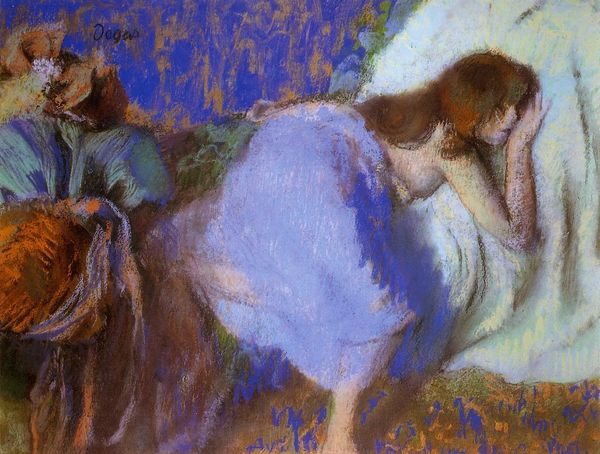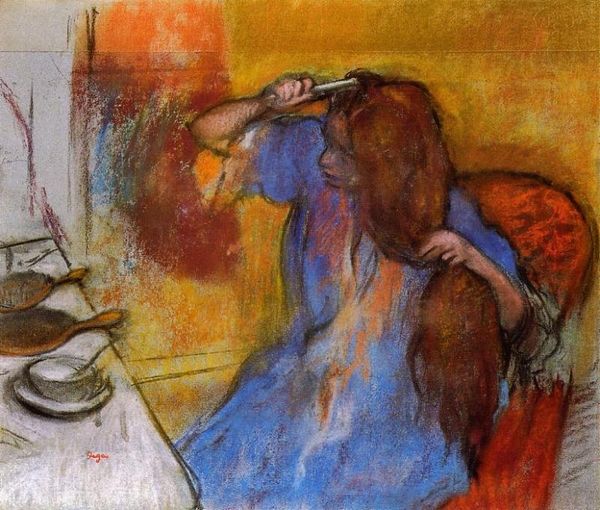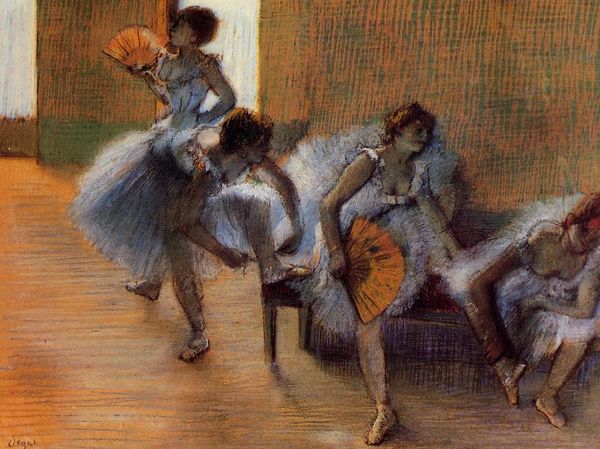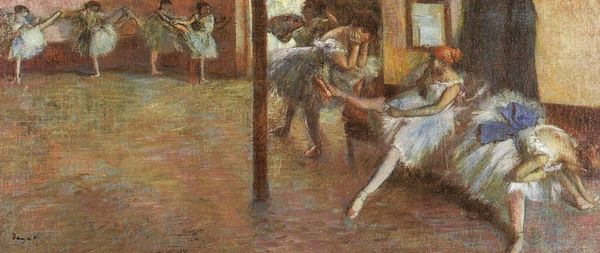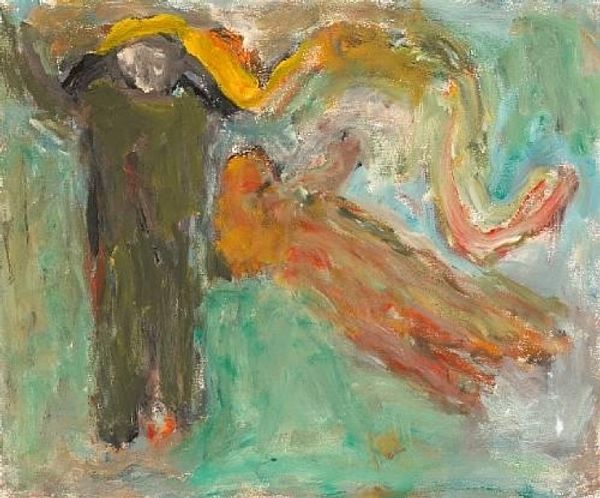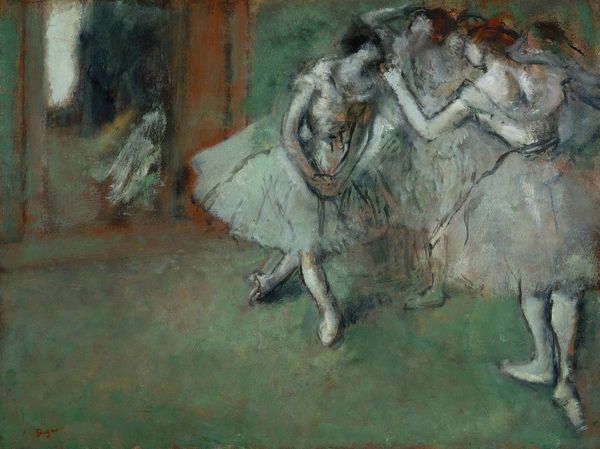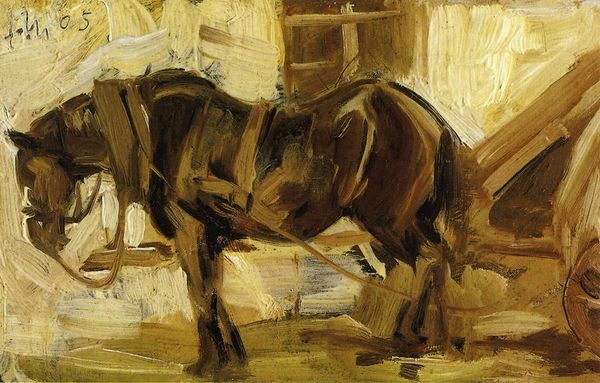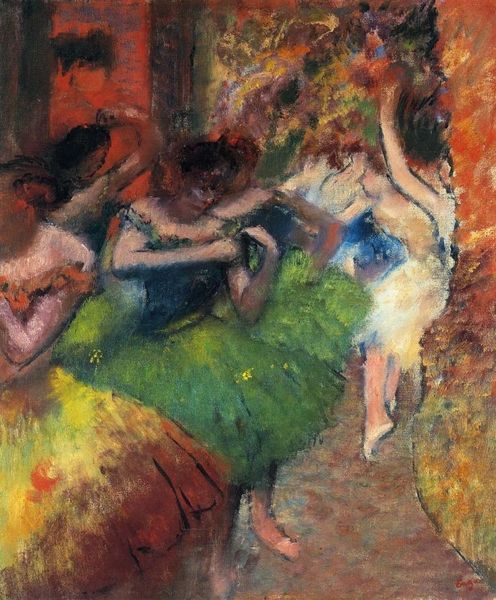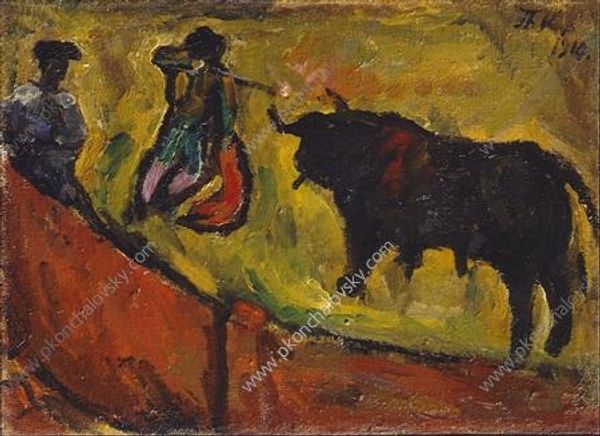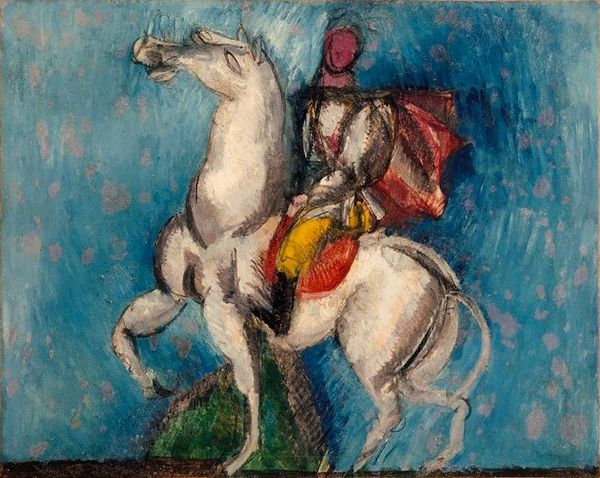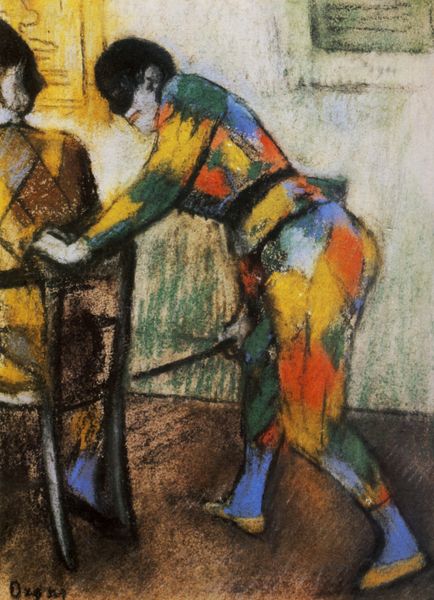
Copyright: Public domain
Editor: Here we have Edgar Degas's "Dancers in a Studio," painted in 1905 with oil on canvas. It depicts dancers both performing and resting in a rehearsal space. It feels to me like a glimpse into a private world. What strikes you about this piece? Curator: Well, immediately, I see how Degas engages with the politics of visibility. These paintings offered wealthy patrons access to the behind-the-scenes world of ballet, a world largely inaccessible to the general public. The paintings helped construct the idea of the ballerina, not just as a performer, but as a commodity, an object of desire. Do you see that interplay of labor and spectacle? Editor: I think so, yes. I noticed the juxtaposition of dancers in motion and those who are resting or adjusting their attire. It’s definitely not just a straightforward depiction of graceful performance. Curator: Exactly! It’s key to understand the context of the Paris Opera Ballet. Many of these dancers came from working-class backgrounds and the ballet represented social mobility. At the same time, there was a power imbalance, with wealthy male patrons often wielding influence over these young women's careers and personal lives. It shaped how these images were created and viewed. Editor: So, you’re saying that what seems like a candid portrayal is actually carefully constructed within a specific social framework. Curator: Precisely. Consider how Degas positions the viewer, almost like an unseen observer, complicit in this voyeuristic gaze. He isn't just capturing movement, but negotiating access, power, and representation. Editor: It makes me rethink my initial impression of a private, intimate moment. It's more complex and purposeful than that. Curator: Right. And understanding that tension—the allure, the work, and the socio-political context—allows us to truly appreciate the layers of meaning in Degas's "Dancers in a Studio". I've never considered the social aspect that much; thanks! Editor: And I hadn’t considered how those socioeconomic factors influenced even what Degas decided to paint. It’s like the painting itself is participating in a bigger social narrative.
Comments
No comments
Be the first to comment and join the conversation on the ultimate creative platform.
